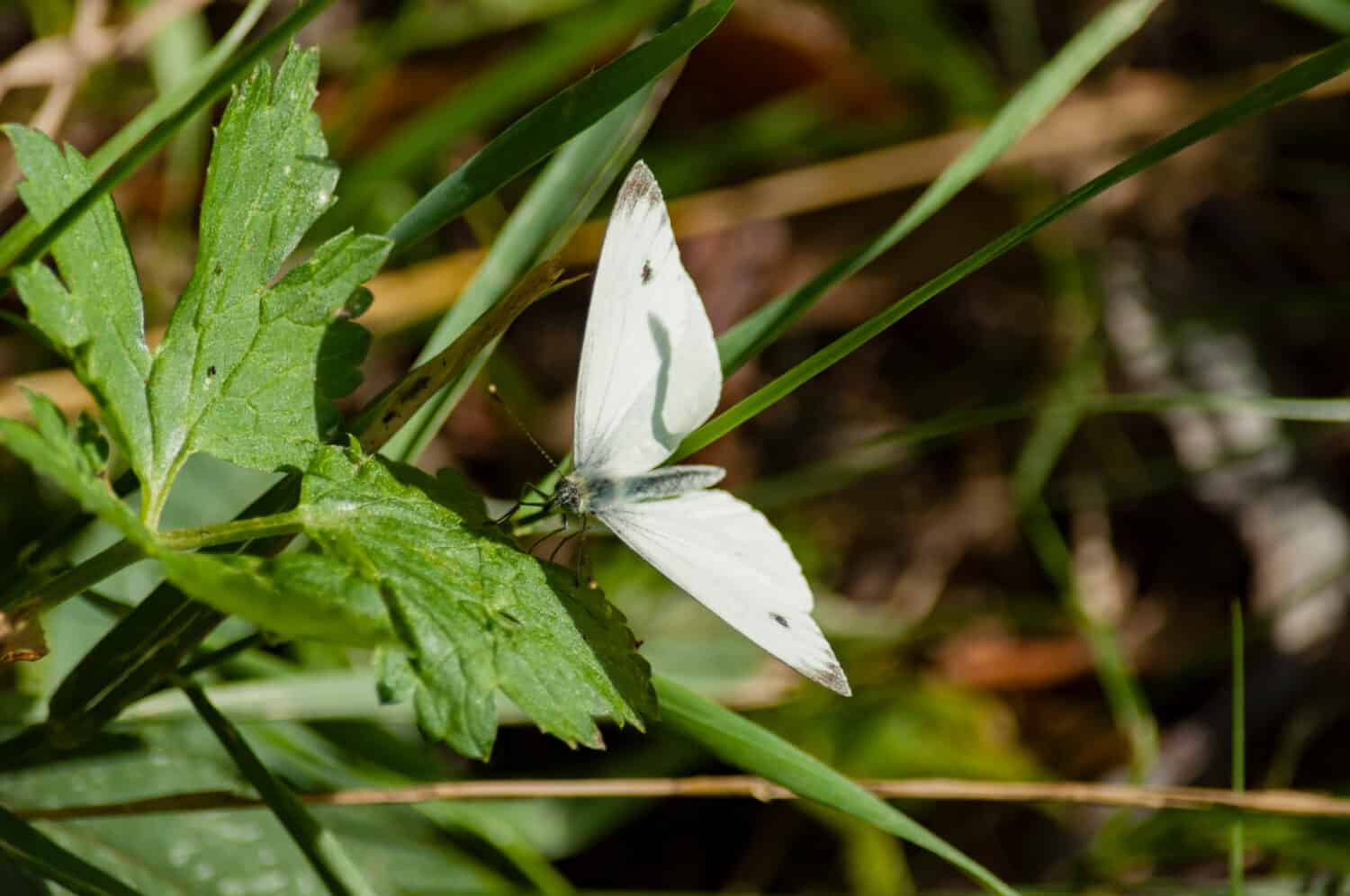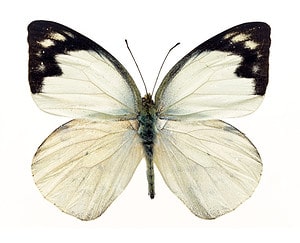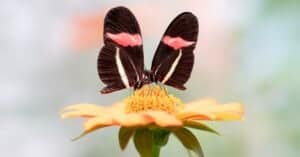Butterflies are found throughout Canada. Actually, over 300 species live and pass through this country. However, some are rarer than others. In this article, we are going to discuss the five rarest butterflies fluttering around Canada and the conversation efforts underway.
Are Butterflies Common in Canada?
Butterflies are very common in Canada. They are mostly seen in Spring and Summer but live anywhere near plants. Some of the most common butterflies in Canada are the cabbage white butterfly, the mourning cloak butterfly, and the Canadian tiger swallowtail. Some of the best places to see butterflies in the country are Point Pelee National Park, the Cambridge Butterfly Conservatory in Ontario, and the Humber Bay Butterfly Habitat.
The 5 Rarest Butterflies Fluttering Around Canada
Sadly, a few of the 300 butterfly species in Canada are dwindling in numbers. These rare butterflies are exciting to see. Here we have five of the rarest butterflies fluttering around Canada. One of these may surprise you!
1. Karner Blue
The Karner blue butterfly’s NatureServe conservation status is critically impaired, meaning you likely won’t see one fluttering around in Canada. They are suffering from habitat loss. Karner blue butterflies are small with a wingspan of about an inch. Males have silvery or dark blue wings with black margins and grey undersides. Their undersides also have orange crescents in the dark borders. Interestingly, female Karner blue butterflies have the same undersides, but grayish-brown topsides. So, where are these tiny blue butterflies found?
Previously, Karner blue butterflies lived throughout the northeastern United States and southern Ontario. They may have also lived in Toronto. However, now they are found in eastern Minnesota, Wisconsin, Michigan, and New York. Currently, they are being introduced back to their native range including Ohio, New Hampshire, and Illinois. The last recorded spotting of a Karner blue butterfly in Canada was in 1991. It’s been officially listed as extirpated from Canada since 1997.
Although there are few Karner blue butterflies left in the world, your best chance of finding one is near open, sunny areas. However, female Karner blue butterflies live more in shaded habitats. They rely on wild lupine. It is the sole larval food source. Adult Karner blue butterflies consume nectar from multiple plants including butterfly weed, white sweet clover, goldenrods, and northern dewberry.

This type of butterfly, the Karner blue, is abundant in Wisconsin and Michigan.
©iStock.com/BobGrif
2. Eastern Persius Dusky Wing
The next rare butterfly in Canada is the eastern Persius dusky wing. They are rare and small brown skipper butterflies that closely resemble the wild indigo dusky wing and the Columbine dusky wing. Currently, in Canada, you may only find these butterflies in southwestern Ontario including the St. Williams Conservation Reserve. While there is a chance of spotting an eastern Persius dusky wing, the last observation was in 1987. They were first collected in 1969, meaning in less than 20 years, this butterfly species went locally extinct. Experts assessed their status in 2016 and confirmed their Extirpated status. It’s also extirpated from Maine.
Eastern Persius dusky wings have four white spots on the upper side of their forewings. These lovely butterflies rely on wild lupine and wild indigo as larval host food. They live in open habitats with oak and pine trees. They likely disappeared from Canada because of habitat loss, invasive species competition, and potentially aerial pesticide application.
3. West Virginia White
Another rare butterfly in Canada is the West Virginia white butterfly. The scientific name for this beautiful butterfly is Pieris virginiensis. According to the NatureServe conservation status system, they are Imperiled, meaning they are at risk of extinction. West Virginia white butterflies are native to parts of North America as north as Canada and as south as Alabama. They live in moist deciduous forests and are most common in areas with a large supply of toothwort. West Virginia white butterflies have short and translucent wings. Their veins are brown-grey.
While this butterfly species isn’t considered at risk for the entire country, they are listed as Special Concern in Ontario. They are mainly found along Lake Ontario. Apart from Ontario, you may find these butterflies in Quebec. West Virginia white butterflies are excellent flies and are most common in April and May, but are gone by June. Like other species, the population is declining because of habitat destruction. However, they are also suffering because of the invasive plant, garlic mustard. Although garlic mustard is similar to the toothwort larval West Virginia white butterflies consume, they don’t eat the plant. The similarities sometimes confuse adult West Virginia white butterflies and they lay their eggs on garlic mustard. In Ontario, they are protected by the West Virginia White Management Plan.

West Virginia white butterflies are rare in Canada. The scientific name for this beautiful butterfly is Pieris virginiensis. They have almost translucent white wings.
©Pavlianchin Vasyl/Shutterstock.com
4. Monarch
Monarch butterflies are the most well-known butterflies in the world. They have vibrant orange wings with black markings and white and yellow spots. But did you know the monarch migratory subspecies is listed as Endangered on the International Union for Conservation of Nature (IUCN) Red List of Threatened Species? Canada, the United States, and Mexico have signed an agreement for Monarch conservation as the population is decreasing.
In Canada, these beautiful butterflies are found from Alberta to Newfoundland. These lovely butterflies migrate up to 2,485 miles from Canada to Mexico. In Mexico, many reach Monarch Butterfly Biosphere Reserve in the Trans-Mexican Volcanic Belt pine-oak forests. Multi-generational monarchs migrate and by Spring, the second, third, and fourth generations return to parts of Canada and the United States. These little butterflies can reach speeds up to 6 mph.
Previously, monarchs overwintered in habitats as large as 44 acres, however, in more recent years it’s between 2 to 10 acres. Why are monarch butterflies disappearing? A lot of the decline has occurred because of the loss of breeding habitat and milkweed. Larvae only eat milkweed. Adults consume milkweed, but also nectar from New World aster, Indian hemp, lilac, red clover, blazing stars, and wild carrot. Many of the migrating monarchs die during migration. Scientists are still researching to understand why, but some believe an increase in car usage plays a role.

In Canada, migrating monarch butterflies are found from Alberta to Newfoundland. They are listed as Endangered on the International Union for Conservation of Nature (IUCN) Red List of Threatened Species.
©Dotted Yeti/Shutterstock.com
5. Frosted Elfin
The last rare butterfly in Canada on our list is the frosted elfin. Like others on this list, its population is declining. The frosted eflin’s native range is throughout the northeastern United States and parts of Canada, however, it lives as far south as Texas. Sadly, the frosted elfin is listed as threatened in Connecticut, New York, and Michigan. It has also disappeared from Virginia, with the last confirmed sighting in 1994. These small brown butterflies are no longer found in Canada. They are listed as Extirpated on Schedule 1 of the Federal Species at Risk Act (SARA). It is also an endangered species in Ontario. The last confirmed sighting of a frosted elfin in Canada was in 1988 near the St. Williams Conservation Reserve.
Frosted elfin butterflies rely on wild lupine, which is rare in Canada. They are specific butterflies that need fire-dependent conifers and grassy openings and fields. Frosted elfin butterflies have a short wingspan of under an inch, typically between 0.87 to 0.94 inches. In the north, they fly from mid-May to June, and from March to April in the south. On the NatureServe conservation status system, they are listed as Imperiled. This butterfly species is a member of the Lycaenidae family and belongs to the genus Callophrys.

Frosted elfin butterflies are members of the Lycaenidae family and belong to the genus Callophrys.
©Taxomony/Shutterstock.com
The photo featured at the top of this post is © David Trevarthen/Shutterstock.com
Thank you for reading! Have some feedback for us? Contact the AZ Animals editorial team.






